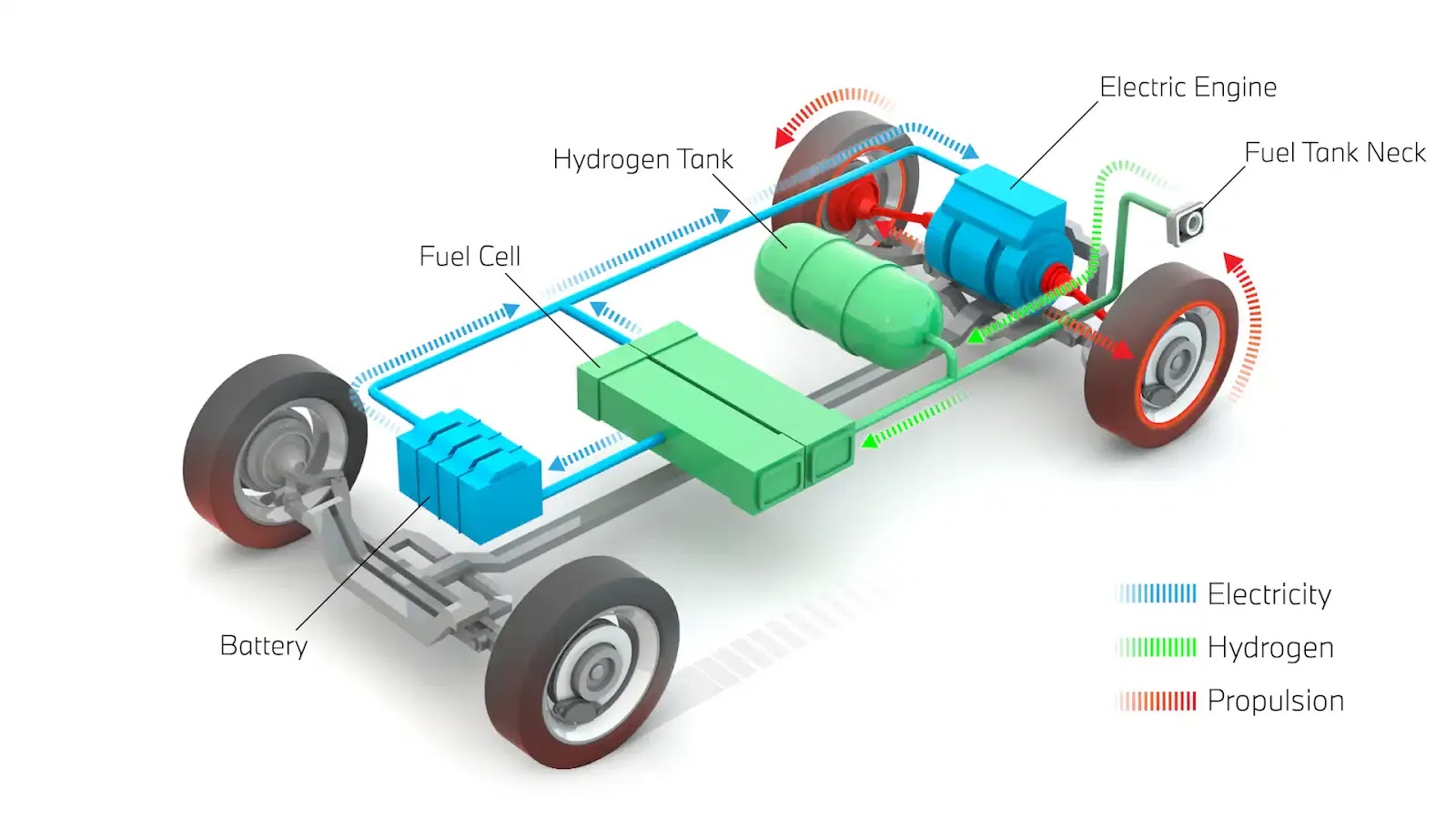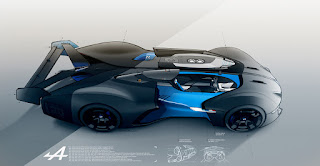Summary Reader Response Draft 1
Cars that utilize hydrogen fuel-cell engines face significant challenges for mainstream adoption. The intricate process and high costs of manufacturing hydrogen fuel-cell pumps, compounded by difficulties in storing hydrogen, hinder their normalization. Despite potential environmental benefits, such as reduced petroleum usage and water as the sole waste product, the economic and manufacturing obstacles currently outweigh these advantages.
Toyota (2023) brings about the Toyota Mirai, and with it
comes its beating heart that powers it and separates itself from its market
rivals, the hydrogen fuel-cell engine. The Mirai uses a Hydrogen fuel-cell
stack to power the car itself, unlike typical electric vehicles and hybrid
cars, which utilize conventional batteries and a combination of electric motors
and a petrol engine respectively. According to Hunting (2023), the engine
performs when oxygen is taken in through the car’s intake at the front of the
Mirai as it is driving. Hydrogen is then provided from tanks that are
constructed in its undercarriage and are mixed with the oxygen gathered inside
the car’s “fuel cell stack.” From this mixing process, clean water is the only
waste product that is released from the car, which makes an emission count of
nought. There are some features that the hydrogen fuel-cell engine provides for
the vehicle. Firstly, it includes three varied driving modes, (Eco, Normal, and
Sport), with Eco mode allowing a longer range at the cost of performance, Sport
mode boosting the power output of the car at the cost of more hydrogen being
used up, and Normal mode which balances the two modes. The Mirai also includes
three hydrogen tanks for a bigger drivable range. Not only this but according
to Leow, (2022), the hydrogen tanks are "so durable that Toyota
test developers shot them with guns, which resulted in the tanks surviving,
instead of the bullets". With these features, the Mirai comes with some impressive
performance statistics, such as a smoother and quieter ride due to the improvements
to the engine made over the years. The upgraded tank now provides a
significantly larger range of 645 km. The engine block is now lighter as well
but provides a higher horsepower output that allows the Mirai to accelerate to
100km/h with much ease. To add on, Toyota has remarkably achieved these
improvements to this engine with parts that cost two-thirds of the previous
generation Mirai.
However, there are still significant challenges and issues
for the mainstream adoption of cars that utilize hydrogen fuel-cell cars. One
of the key issues is the process and manufacturing of storage of hydrogen,
which is extremely complex and difficult.
According to TWI, (2024), hydrogen itself is difficult to store due to
its low volumetric energy density, thus it is easily lost in the atmosphere. To
add on, hydrogen is extremely flammable, thus it requires the utmost safety of
those who are handling hydrogen, and complex equipment such as flame detectors
are needed to ensure that there are no hazards when hydrogen is being stored.
Another huge disadvantage of using engines that run on
hydrogen is the high cost, particularly concerning the construction of
hydrogen fuel-cell refuelling stations or pumps, as well as the expense of
refuelling a hydrogen fuel-cell vehicle compared to other types of vehicles
currently on the roads, such as electric vehicles, petrol, or diesel-fuelled
cars. This high cost stems from the complexity of storing hydrogen compared to
other fuels, necessitating substantial investment in research and development for
machinery and storage units such as hydrogen fuel pumps and transportation
tanks for trucks. For instance, according to Donut Media (2021), the average
cost of manufacturing a single hydrogen pump is a staggering US$2 million,
whereas a similar electric charging point or fuel pump costs about US$50
thousand and US$300 thousand respectively. Similarly, refuelling with hydrogen
is notably expensive, estimated at around US$80 to fill a single tank compared
to an average of US$32 for a similar-sized tank of conventional fuel. These
cost challenges significantly hamper the demand for vehicles utilizing hydrogen
fuel cell engines. Statista (2022) provides data indicating that in 2022, only
54 hydrogen fuel pumps were available in the USA, with none in Singapore,
highlighting the rarity of these fuelling stations due to the financial burdens
they impose on companies involved in their construction.
There is a glimmering hope of the possible use of hydrogen fuel cell engines, and that is its eco-friendliness and environmental
benefit. According to Donut Media (2021), These engines combust hydrogen and
oxygen, causing water to be the only by-product, instead of harmful pollutants
like carbon monoxide from engines running on petroleum. To further add on,
compared to combustion engines, hydrogen fuel cell engines are much more
efficient than combustion engines, boasting a faster refuelling time to a full
tank.
-
Hunting, B. (2023, March 14). Toyota
Mirai proves hydrogen is the future - and always will be. InsideHook.
https://www.insidehook.com/autos/review-2023-toyota-mirai-hydrogen-fuel-future/amp
-
Ju-Len, L. (2022). Toyota’s
futuristic Mirai is still stuck in the future. The Business Times. https://www.businesstimes.com.sg/lifestyle/toyotas-futuristic-mirai-still-stuck-future
-
2023 Toyota Mirai. 2023 Mirai. (n.d.). https://www.toyota.com/mirai/
-
Donut Media. (2021, April 12). Why
hydrogen cars flopped. YouTube.
https://youtu.be/b88v-WvqzeQ?si=Ro8lq2lgpWurBHkp
-
Number of hydrogen fuel
stations by country in 2022. Statista. (2024, January
26).
https://www.statista.com/statistics/1026719/number-of-hydrogen-fuel-stations-by-country/



Comments
Post a Comment